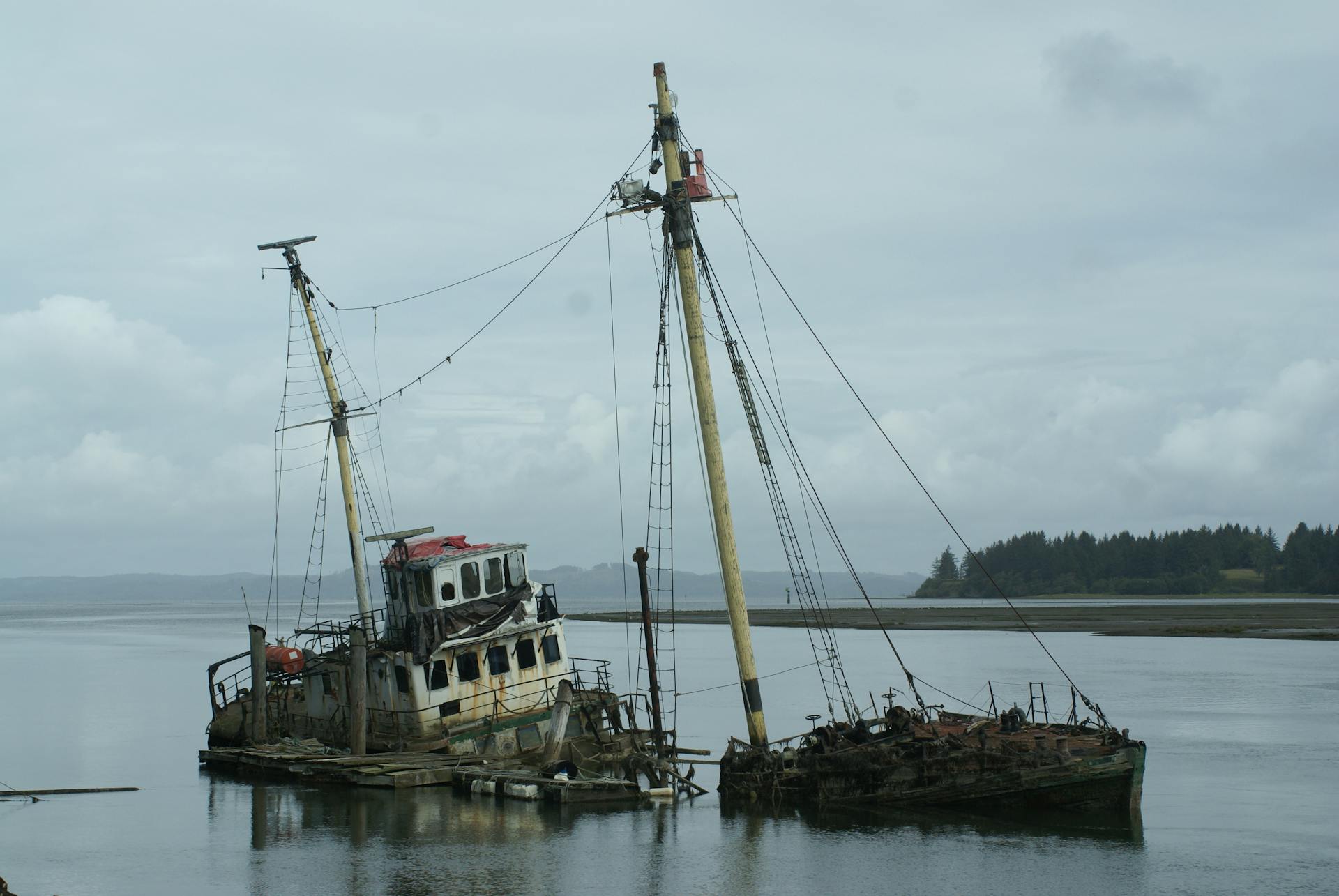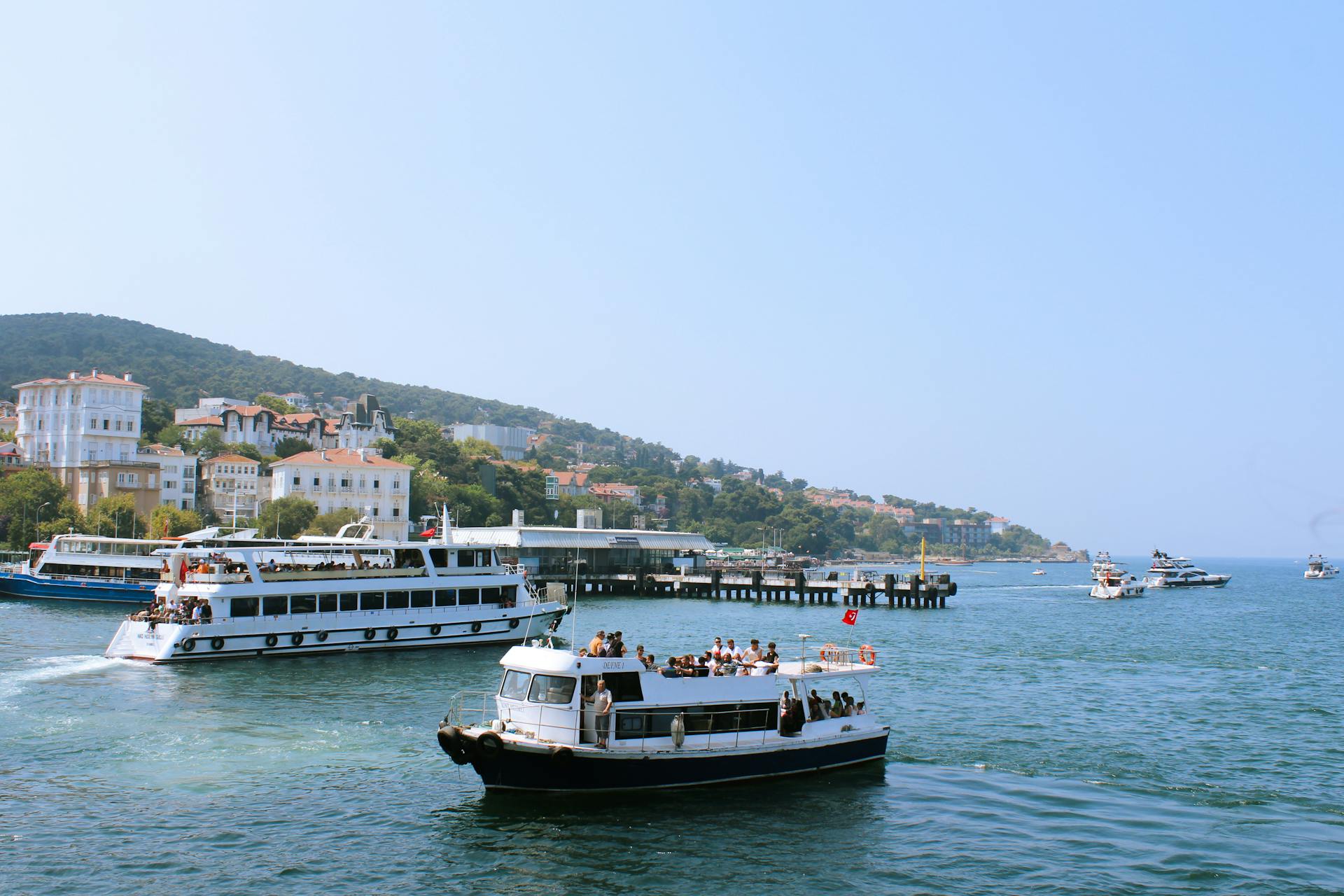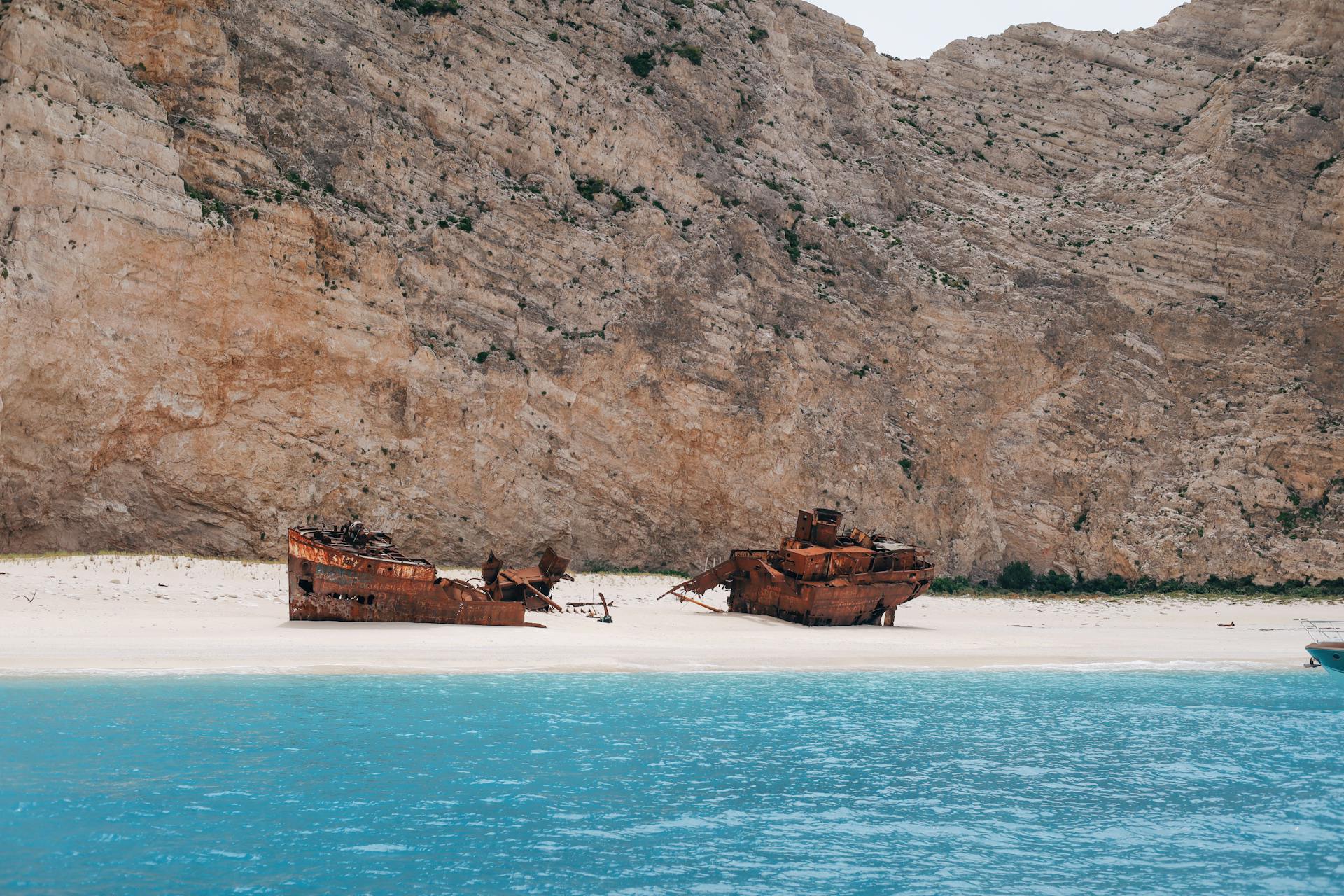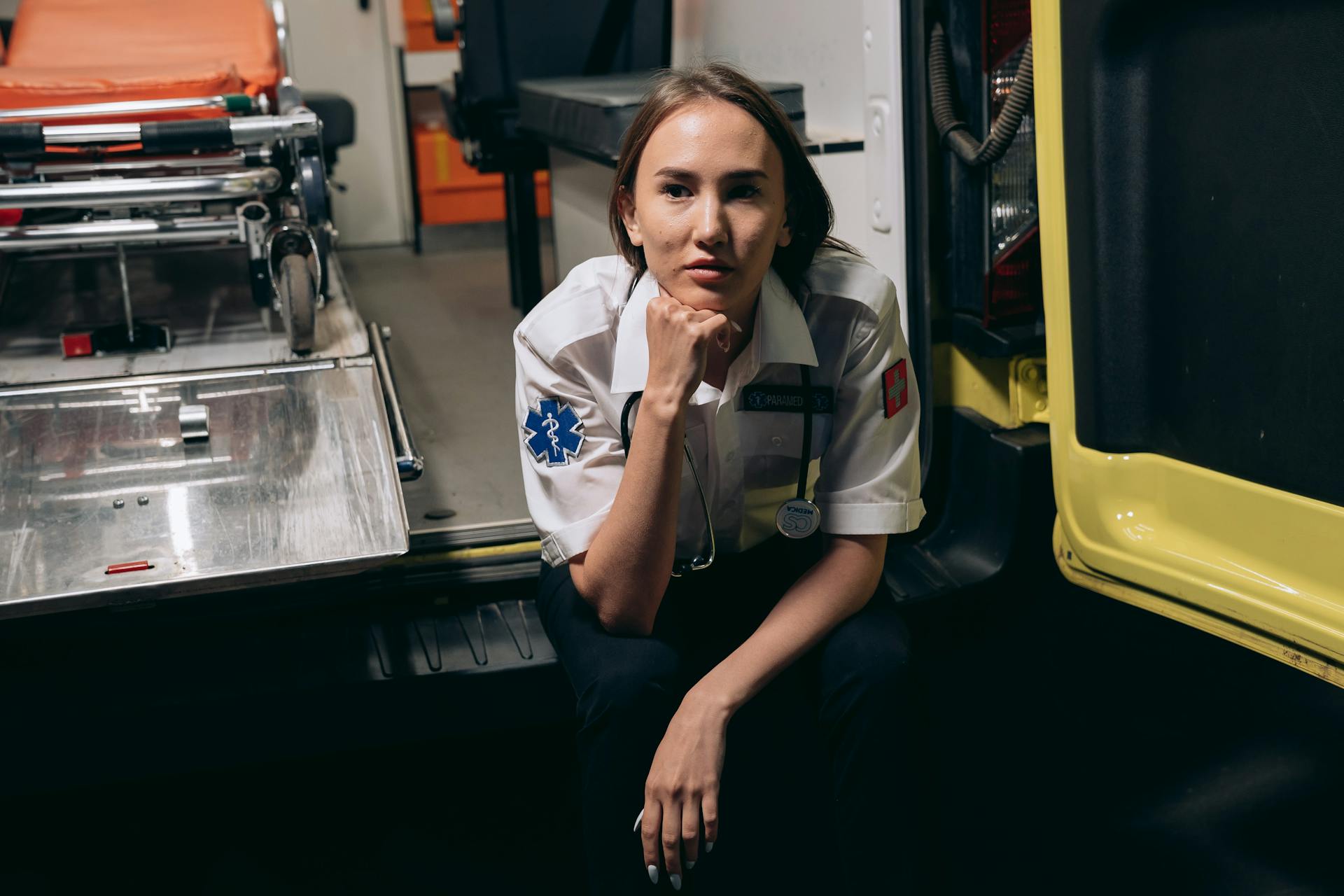
The RMS Carpathia is a ship that's often overshadowed by its more famous counterpart, the Titanic. However, it played a crucial role in the Titanic's tragic story.
The Carpathia's crew was incredibly resourceful, and they managed to save over 700 passengers from the freezing waters of the North Atlantic. This was no easy feat, considering the Carpathia itself was a smaller ship.
As the Carpathia sailed to the Titanic's rescue, it had to navigate through treacherous icebergs and harsh weather conditions. The crew's bravery and quick thinking ultimately led to the rescue of many survivors.
The Titanic Disaster
The Titanic disaster was a pivotal moment in history, and the RMS Carpathia played a heroic role in it. On April 11, 1912, the Carpathia set sail from New York, unaware of the tragic events that would unfold.
The Titanic's unexpected distress call was relayed to the Carpathia, which was 58 nautical miles away. Captain Arthur Rostron immediately ordered the Carpathia to alter course and head towards the Titanic.
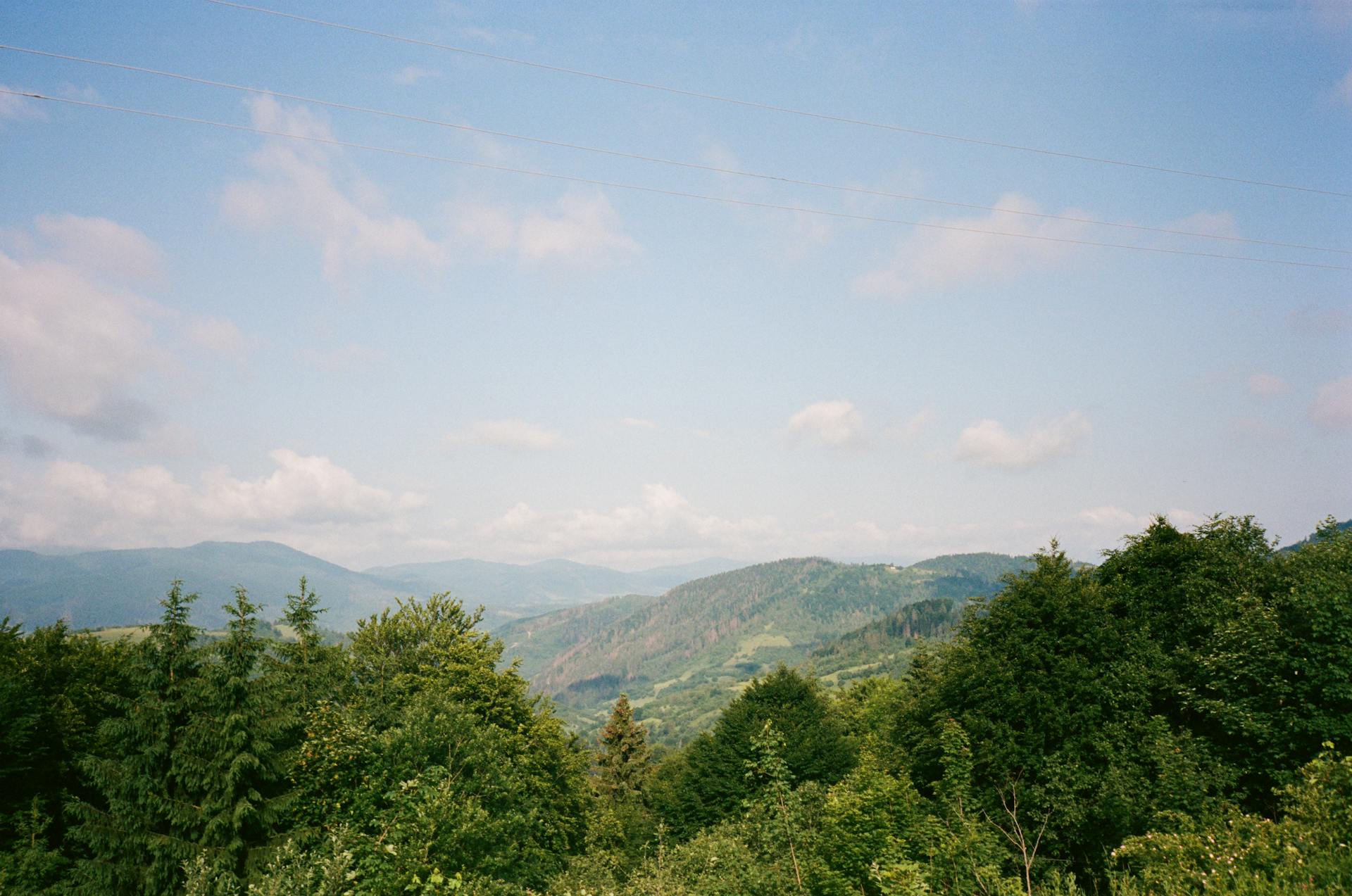
The Carpathia picked up pace, speeding through the night at 17-17.5 knots, despite the potential damage to her powerplant. Her boilers over-pressurized and inflicted damage on the engines, but she gave it her all.
The Titanic sank at 2:20am on April 15, and the Carpathia arrived on the scene to rescue survivors. Her crew pulled 705 men, women, and children from lifeboats bobbing in the icy water.
The Carpathia's bravery and quick thinking saved countless lives that day. Her heroic actions will always be remembered as a testament to the power of human compassion and determination.
WWI Service
During the First World War, the Carpathia played a significant role in transporting troops to Europe.
The Carpathia sailed from New York through Halifax to Liverpool and Glasgow, often in convoy with other ships.
One notable passenger during the war years was Frank Buckles, who went on to become the last surviving American veteran of the Great War.
The Carpathia's distinctive red funnel, a custom of the Cunard Line, was painted in battle grey at some point during her enlistment.
The entire ship was painted in wartime dazzle camouflage prior to March 1918.
The Carpathia's Role
The RMS Carpathia played a heroic role in rescuing survivors from the sinking of the Titanic. The ship was on its way to New York when it received distress calls from the Titanic.
It was the Carpathia that arrived on the scene of the disaster, providing vital assistance to the survivors. The ship took on over 700 survivors from the Titanic's lifeboats.
The Carpathia's crew worked tirelessly to care for the survivors, providing them with food, clothing, and medical attention. The ship's cargo holds were converted into makeshift hospitals and dormitories.
The Carpathia's crew also helped to identify the bodies of those who had died in the disaster, with the ship's purser, Herbert McElroy, taking charge of the task.
The Ship's History
The RMS Carpathia was built in 1902 by the Cunard Line's rival, the Caledon Shipbuilding & Engineering Company, in Dundee, Scotland.
She was a passenger liner that measured 650 feet in length and had a gross tonnage of 12,950 tons.
The Carpathia was designed to be a luxury ship, with amenities such as a swimming pool, a gym, and a dog kennel on board.
Background
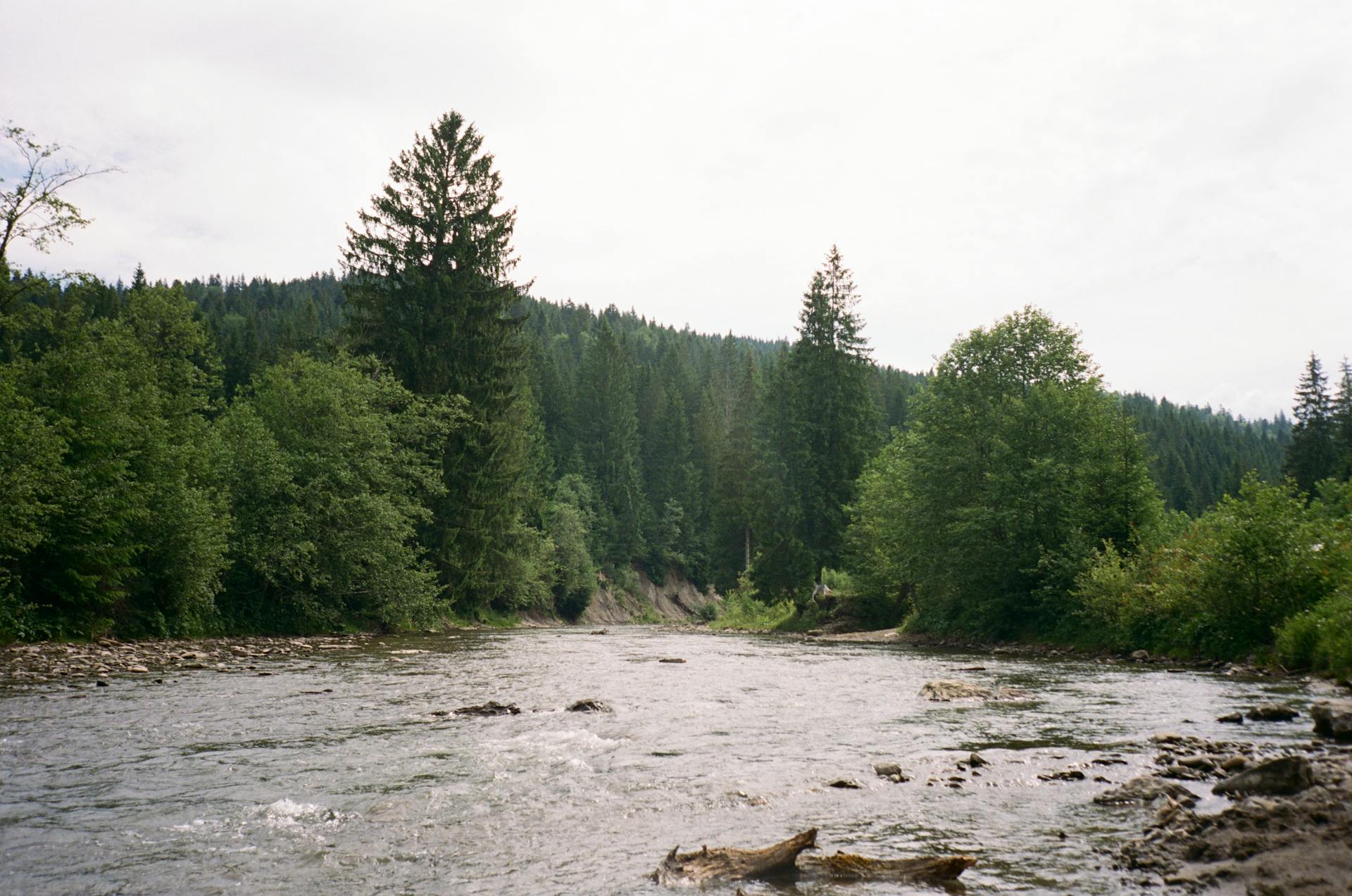
Around 1900, the Cunard Line faced stiff competition from other shipping companies. This competition came from the British White Star Line and the German lines Norddeutscher Lloyd and Hamburg America Line.
Cunard's largest liners at the time, the RMS Campania and RMS Lucania, were 12,950 gross register tons and had a reputation for size and speed. They had even held the "Blue Riband" for the fastest crossing of the Atlantic Ocean.
However, Norddeutscher Lloyd's new liner SS Kaiser Wilhelm der Grosse took the Blue Riband from them in 1897. The White Star Line was also planning to launch a new 17,000-GRT liner, the RMS Oceanic, in 1899.
Cunard decided not to try to regain prestige by building faster or larger liners, but instead focused on maximizing profitability. This was to remain solvent and fend off any takeover attempts by competing shipping conglomerates.
The three new ships Cunard ordered, the SS Ivernia, Saxonia, and Carpathia, were designed for immigrant travelers and were not particularly fast. However, they provided significant cost savings in fuel economy.
The Carpathia was a modified design of the Ivernia-class ships, being approximately 40 feet shorter than her "half-sisters".
A Class of Its Own
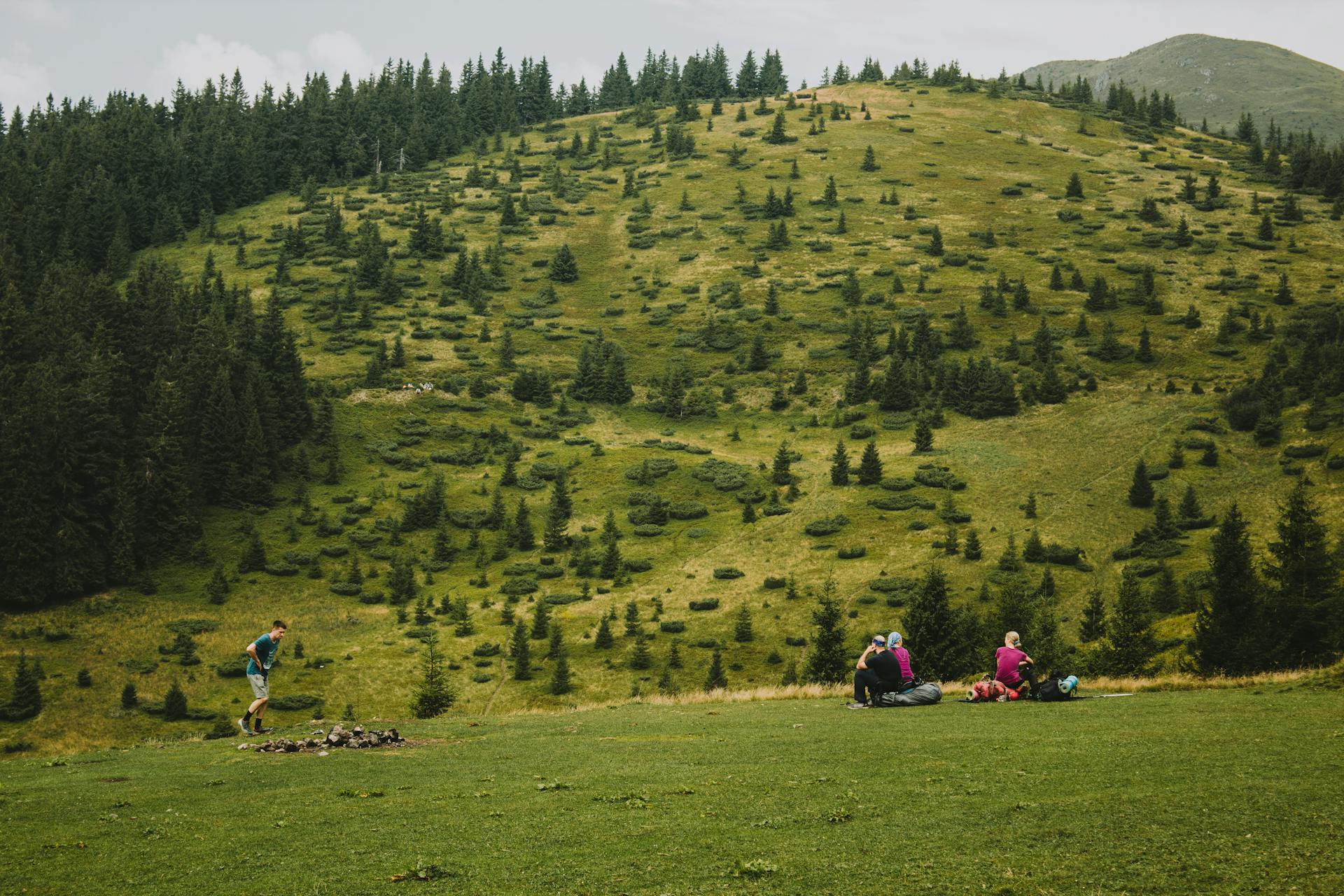
RMS Carpathia was a ship like no other, even at its launch in 1902, it didn't have a first-class section, which was a bold move at the time.
Carpathia's initial accommodation was for 1,600 third-class and 200 second-class passengers, a significant departure from the traditional class divisions of the era.
The ship's fitout was of the highest quality, with rich upholstery, mahogany furniture, and golden port curtains, setting a new standard for its time.
Meals were included in the third-class fares, a rare practice back then, and passengers had access to several communal rooms with generous space to relax.
Even in third-class, passengers could enjoy the ship's luxurious features, like the stained-glass dome and walnut panelling, making it a superior experience compared to other ships.
Carpathia's unique blend of modesty and generosity quickly won over its passengers, earning a loyal following among leisure cruisers.
On its first voyage from Liverpool in May 1903, Carpathia aimed for New York via Queenstown, and it quickly became a favourite among its passengers.
The Sinking and Aftermath
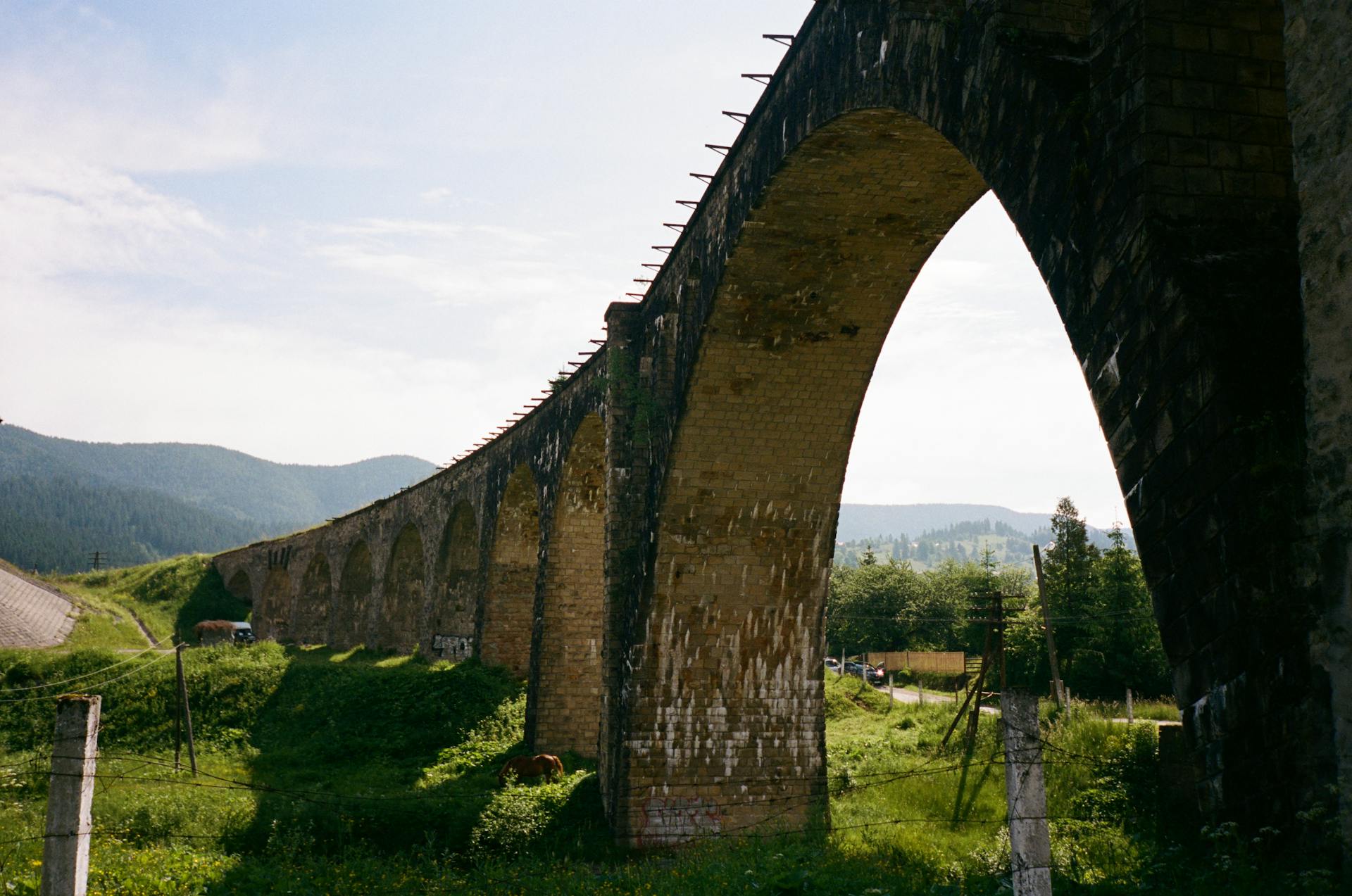
The RMS Titanic sank at 2:20am on April 15, ultimately succumbing to the disaster despite Carpathia's valiant efforts.
Carpathia was 58 nautical miles away from the Titanic's position when she received the distress call, and it would take her four hours to reach the stricken liner.
Captain Arthur Rostron ordered Carpathia to give all she had, shutting off non-essential systems and directing all steam to the engines to increase her speed.
Carpathia sped through the night at 17-17.5 knots, but ultimately arrived too late to prevent the Titanic's sinking.
Sinking and Aftermath
The Carpathia was the first ship on the scene after the Titanic sank in 1912.
It raced at high speeds through waters filled with icebergs to reach the survivors. The crew pulled 705 men, women, and children from lifeboats bobbing in the icy water.
The Carpathia was intact and sitting upright at the bottom of the Atlantic Ocean, 500 feet beneath the surface, 120 miles south of Fastnet, Ireland.
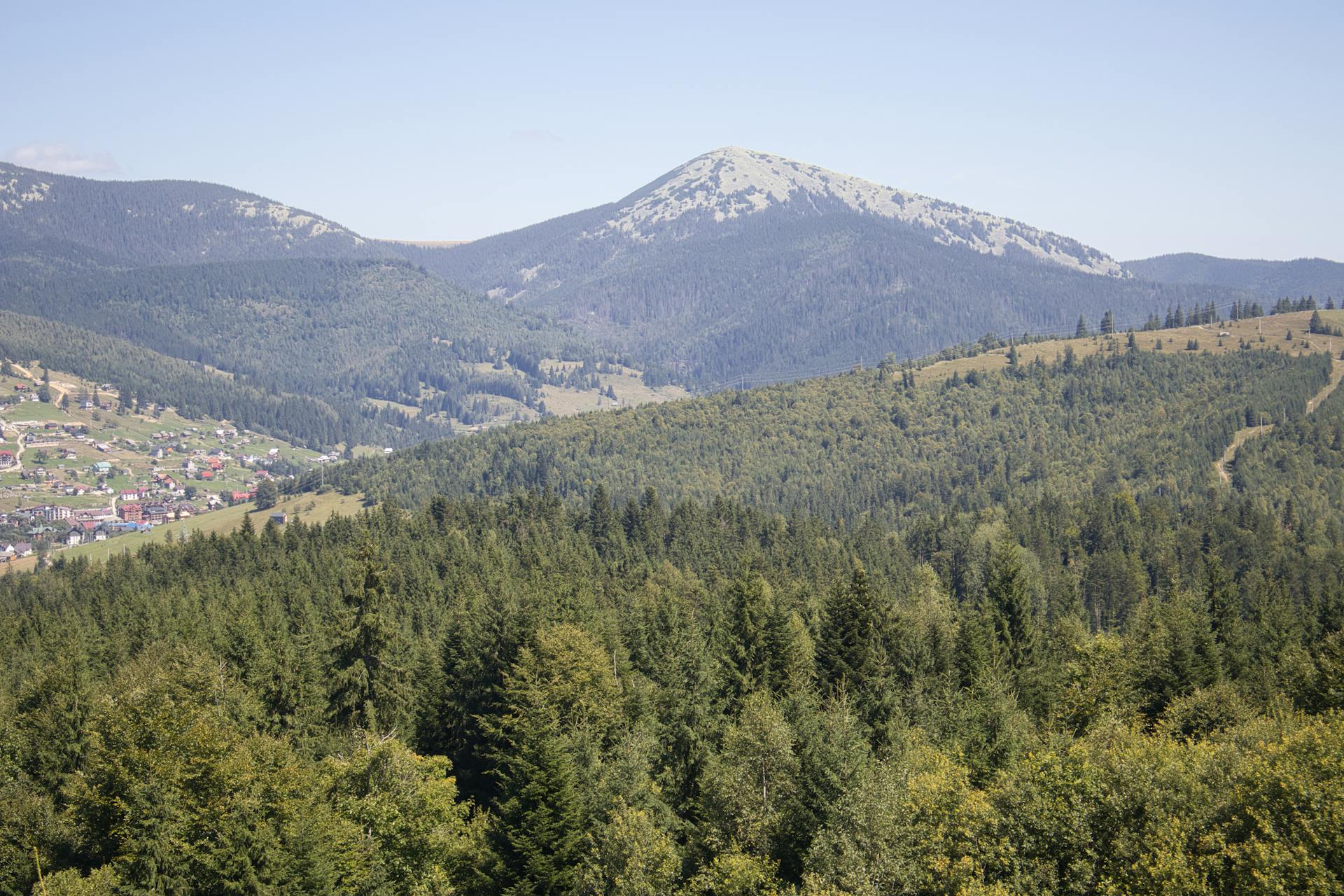
Huge tears in the side of the ship's hull and exploded boilers were visible on the wreck site.
The Carpathia's crew returned 13 of Titanic's lifeboats to the White Star Line at Pier 59.
The Titanic tragedy led to a change in maritime regulations, requiring passenger liners to have enough lifeboats for everyone on board.
Discovery and Salvage
The discovery of the Carpathia's wreck was a long and challenging process. In 1999, Argosy International Ltd. claimed to have found the wreck, but it turned out to be the Hamburg-America Line's Isis.
Clive Cussler, an American author and diver, led the National Underwater and Marine Agency (NUMA) to finally find the Carpathia's wreck in 2000. They discovered it at a depth of 500 ft (150 m) in the Atlantic Ocean.
The wreck was found 120 mi (190 km) west of Fastnet, Ireland, and was confirmed to be the Carpathia by scanning sonar and remote operating vehicles. Cussler's team was able to pinpoint the wreck using these technologies.
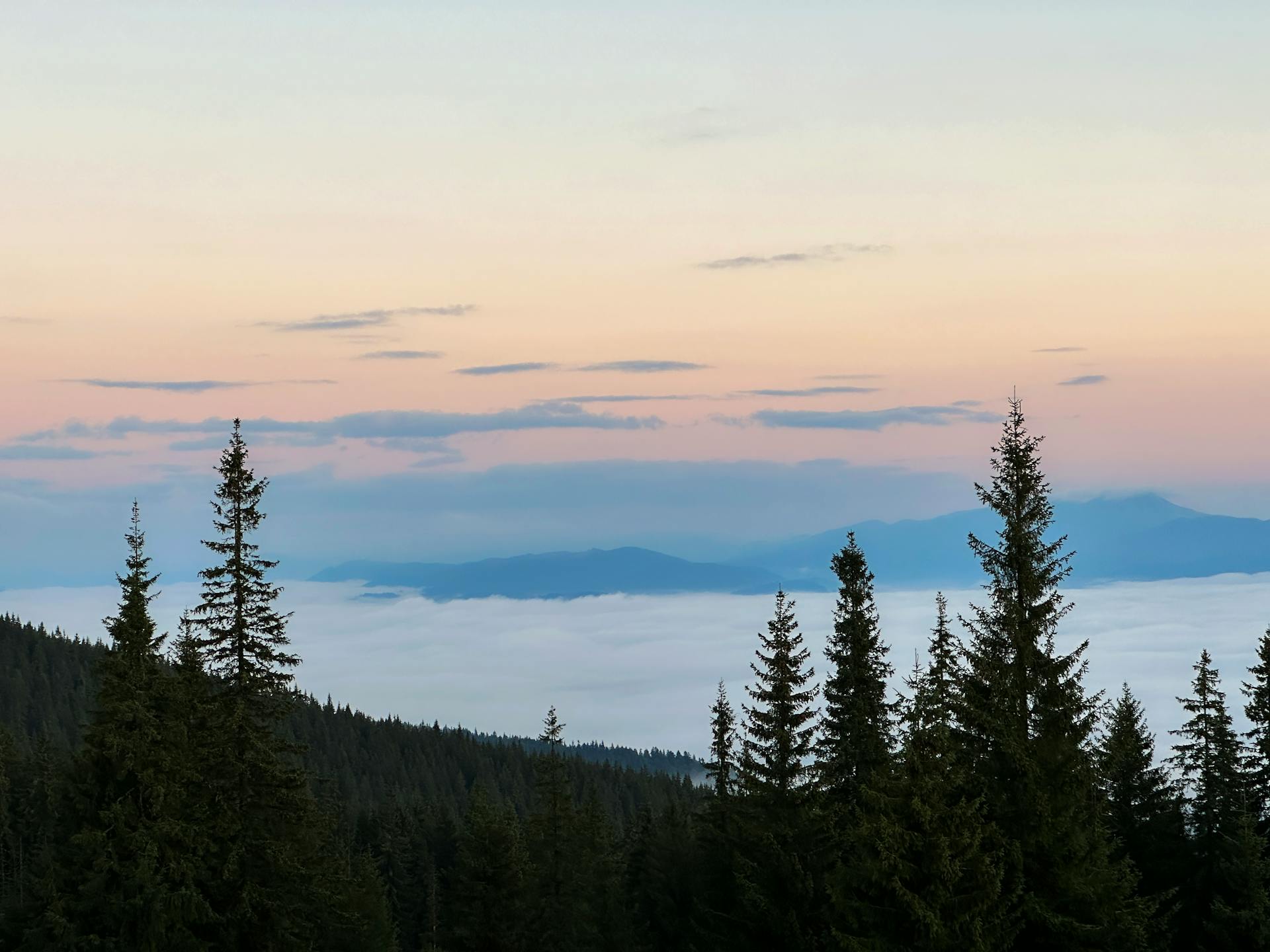
In 2000, the Carpathia's wreck was found to be intact and sitting upright at the bottom of the sea, with huge tears in the side of the ship's hull and exploded boilers. This was confirmed by video images released by the documentary film company Eco-Nova productions.
The wreck of the Carpathia is owned by Premier Exhibitions Inc., formerly RMS Titanic Inc., which plans to recover objects from the wreck.
The Human Condition
The rescue of Titanic's survivors was a traumatic experience for everyone involved, including the crew of Carpathia. They were surrounded by sheer agony as losses became truly realised.
Many questions followed on what to do next, including whether to pick through the debris and corpses at sea. The decision was taken not to try to achieve any more on site.
It was near impossible that anyone in the water would've survived such deathly cold and wading through the area would greatly upset the survivors on board. The survivors were already struggling to keep it together.

The crew of Carpathia were tasked with providing nourishment and a comfortable space for the survivors. Beyond that, there was a limit to what they could do but for letting the women cry themselves out.
Carpathia's Second Officer James Bissett hoped he would never hear such utter devastation again. Captain Rostron requested Carpathia's house-flag be set to half-mast before they made a slow circuit of the wreckage.
The first-class lounge hosted a service which honoured the dead and offered thanksgiving for the saved souls. Captain Rostron believed that the 'hand of God was on the helm of the Carpathia' throughout the ordeal.
As the service came to a close, Captain Rostron gave the order to "Bear away from the wreckage south-westerly." The nearby SS Californian was instructed to remain in the area and pick up any bodies that she could.
Breaching Safety Speeds
Captain Rostron of the Carpathia ordered his ship to give all she had, increasing her speed to 17-17.5 knots despite the potential danger.
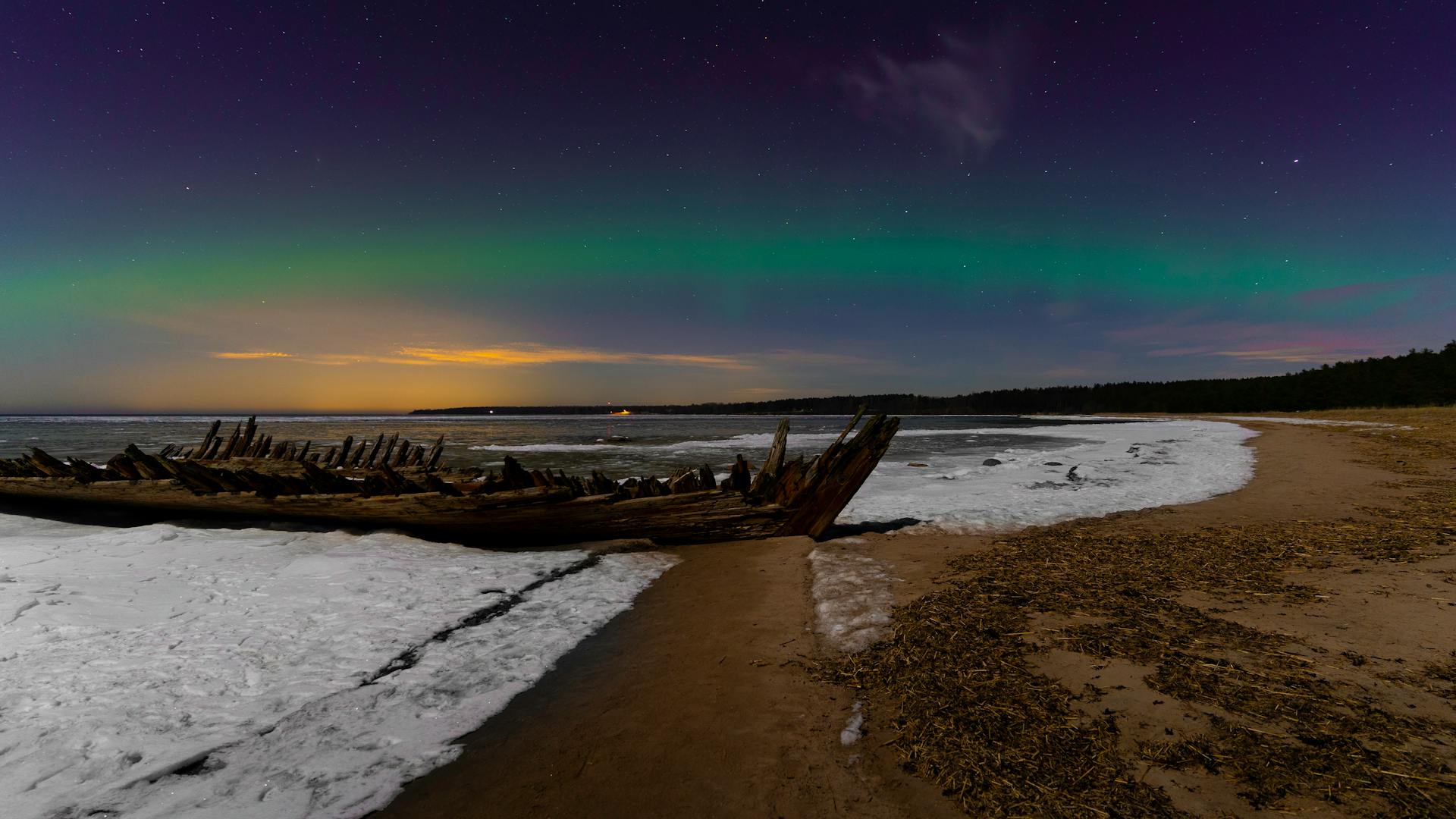
The Carpathia's boilers ran over-pressurised and the engines incurred damage as a result of this mercy dash.
At 1.10am, the wireless communication on board the Carpathia and other ships became chaotic, with morse signals jamming due to the cacophony of frenetic radio activity.
RMS Olympic, one of the Titanic's sister ships, intervened with some forceful words, telling all stations to stop transmitting and jamming.
There was a brief but reluctant lull in wireless communication, allowing the Olympic to talk to the Titanic.
The Titanic's CQD and SOS signals went out with increasing urgency, as her situation became desperate.
At 2.10am, the Titanic broadcast her final clear message: "CQD TITANIC. WE ARE SINKING FAST. PASSENGERS ARE BEING PUT INTO BOATS. TITANIC."
The Rescue Efforts
The RMS Carpathia rescued 705 men, women, and children from the Titanic, with its crew pulling survivors from lifeboats bobbing in the icy water.
The rescue process was carried out in silence, with the crew working efficiently to lift passengers one-by-one out of their lifeboats and into the Carpathia.
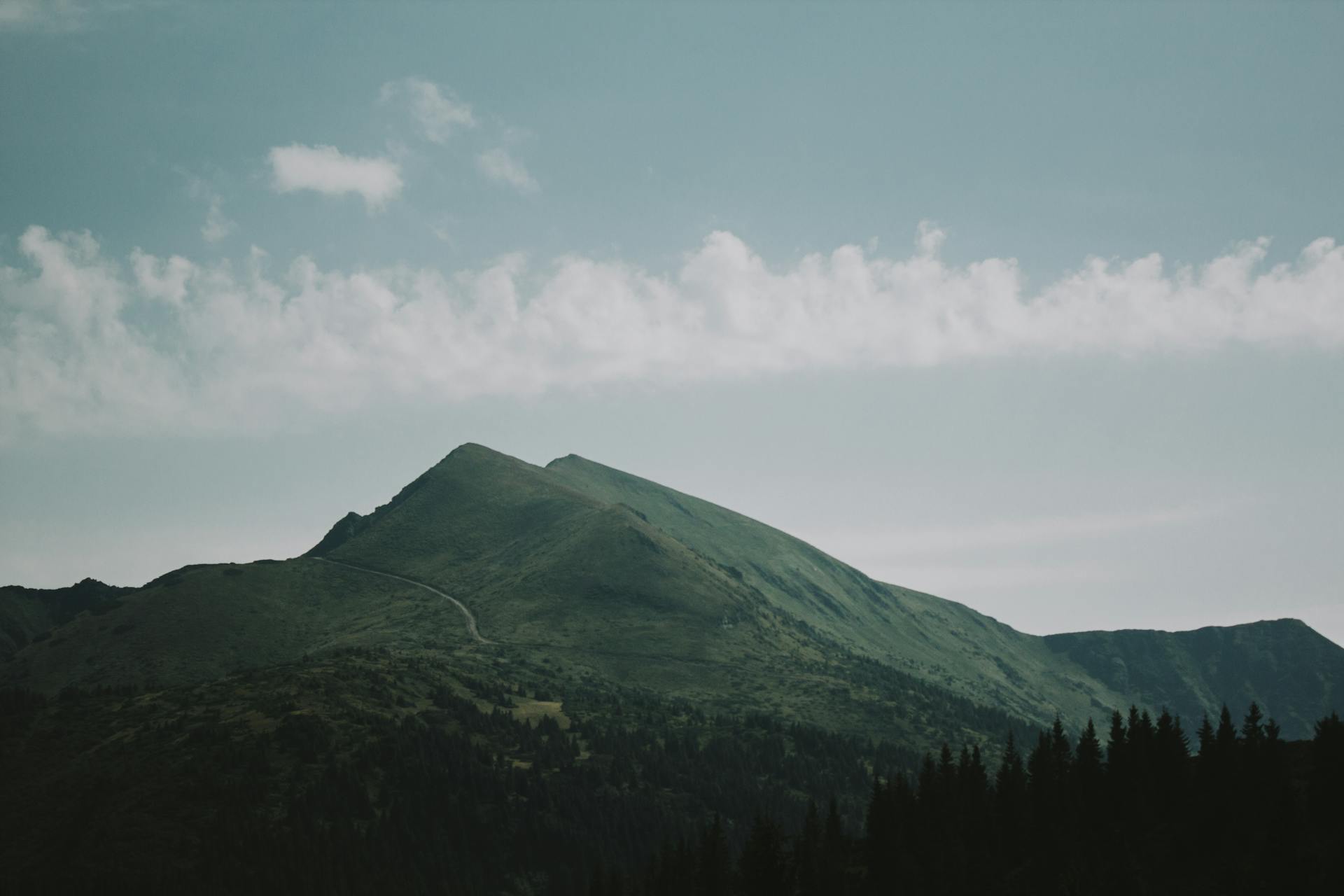
By 8.30am, 703 survivors were aboard the Carpathia, with six of Titanic's lifeboats hoisted up to the foredeck and seven more carried overside.
The Carpathia's own boats were swung out to make space, and when that ran out, the empty lifeboats from Titanic were set adrift.
A total of 315 men, 336 women, and 52 children were saved by the RMS Carpathia.
The rescue was a remarkable feat, considering the crew had to deal with passengers in an unfit state for climbing to safety.
The Carpathia's crew used bosun's chairs or canvas bags to lift passengers out of their lifeboats, and its own passengers assisted where they could.
The rescue efforts were a testament to the bravery and compassion of the Carpathia's crew and passengers.
Frequently Asked Questions
Where did the Titanic survivors sleep on Carpathia?
Titanic survivors slept in the third-class accommodations on the Carpathia, which were made available by the ship's officers and first and second-class passengers. This generous gesture allowed the survivors to stay in more comfortable quarters.
Has the Carpathia wreck been found?
The Carpathia wreck was reportedly discovered in 2000 by Clive Cussler's organisation, NUMA, at a depth of 500 ft. However, the authenticity of this discovery is not confirmed.
Did the Carpathia damage its engines?
Yes, the Carpathia's engines incurred damage due to over-pressurized boilers during its mercy dash. The ship's engines suffered damage as a result of its high-speed journey.
Sources
- https://en.wikipedia.org/wiki/RMS_Carpathia
- https://www.businessinsider.com/photos-titanic-passengers-getting-rescued-by-carpathia-2020-4
- https://numa.net/expeditions/r-m-s-carpathia/
- https://www.worldofcruising.co.uk/editors-corner/carpathia-titanic-sinking-aftermath
- https://www.worldofcruising.co.uk/editors-corner/rms-carpathia-titanic-hero-greatest-ship
Featured Images: pexels.com
